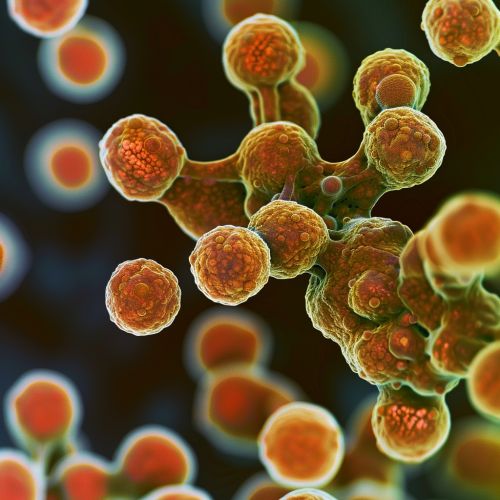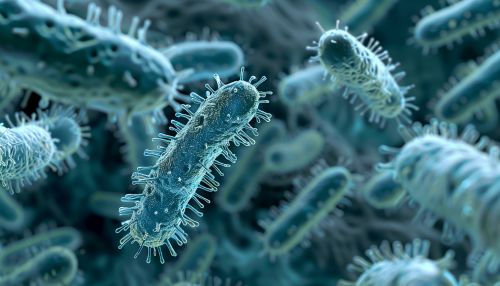Chemolithotrophy
Introduction
Chemolithotrophy is a type of metabolism where energy is produced by oxidation of inorganic compounds. This process is primarily found in prokaryotic organisms and forms a crucial part of the nitrogen, sulfur, and iron cycles in nature. Unlike phototrophs that utilize light for energy, or organotrophs that use organic compounds, chemolithotrophs derive their energy from inorganic sources.


Metabolic Process
Chemolithotrophs utilize a variety of inorganic molecules for their metabolic processes. These include hydrogen, hydrogen sulfide, ferrous iron, and ammonia. The energy derived from the oxidation of these compounds is used to produce ATP in a process known as chemiosmosis. This ATP is then used to drive various cellular processes, including the synthesis of organic compounds needed for growth and reproduction.
Ecological Significance
Chemolithotrophs play a vital role in various biogeochemical cycles. They are involved in the oxidation of ammonia to nitrite in the process of nitrification, a key step in the nitrogen cycle. Similarly, they participate in the oxidation of hydrogen sulfide to sulfate in the sulfur cycle, and the oxidation of ferrous iron in the iron cycle.
Types of Chemolithotrophs
Chemolithotrophs can be broadly classified into two types based on their source of carbon: autotrophs and mixotrophs. Autotrophic chemolithotrophs use carbon dioxide as their sole source of carbon, whereas mixotrophic chemolithotrophs can use both carbon dioxide and organic compounds.
Autotrophic Chemolithotrophs
Autotrophic chemolithotrophs, also known as chemolithoautotrophs, are organisms that use inorganic compounds as a source of energy and carbon dioxide as a source of carbon. They are capable of fixing carbon dioxide into organic compounds through the process of carbon fixation. This group includes several bacteria and archaea, such as Nitrosomonas, Nitrobacter, and Sulfolobus.
Mixotrophic Chemolithotrophs
Mixotrophic chemolithotrophs, or chemolithomixotrophs, are organisms that can use both inorganic compounds and organic compounds as sources of energy, and both carbon dioxide and organic compounds as sources of carbon. They are capable of switching between different energy and carbon sources depending on the availability of resources in their environment. This group includes several bacteria, such as Thiobacillus.
Applications
Chemolithotrophs have several potential applications in biotechnology and environmental remediation. They can be used in the treatment of wastewater, removal of sulfur from coal, and bioleaching of metals from ores. Additionally, they have potential applications in the production of biofuels and other bioproducts.
